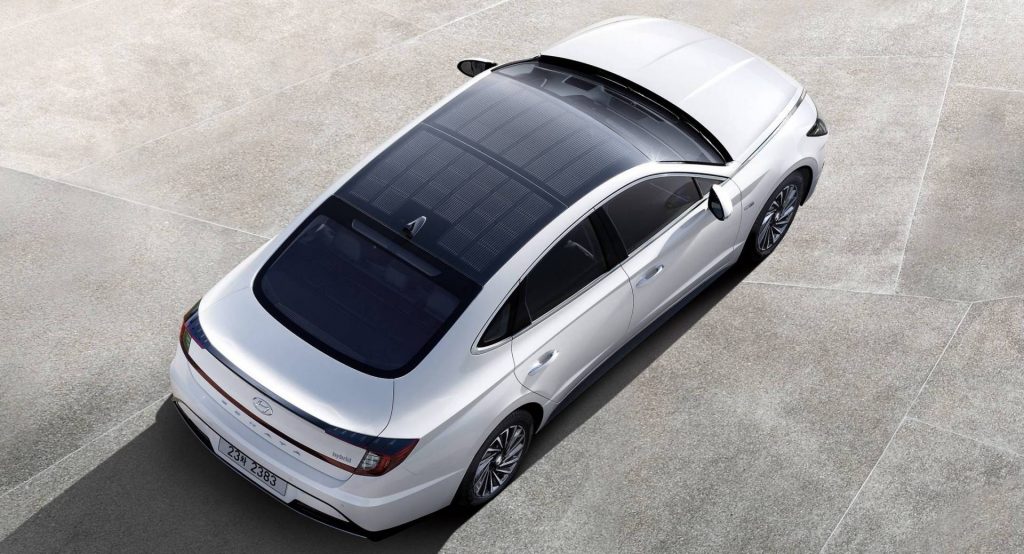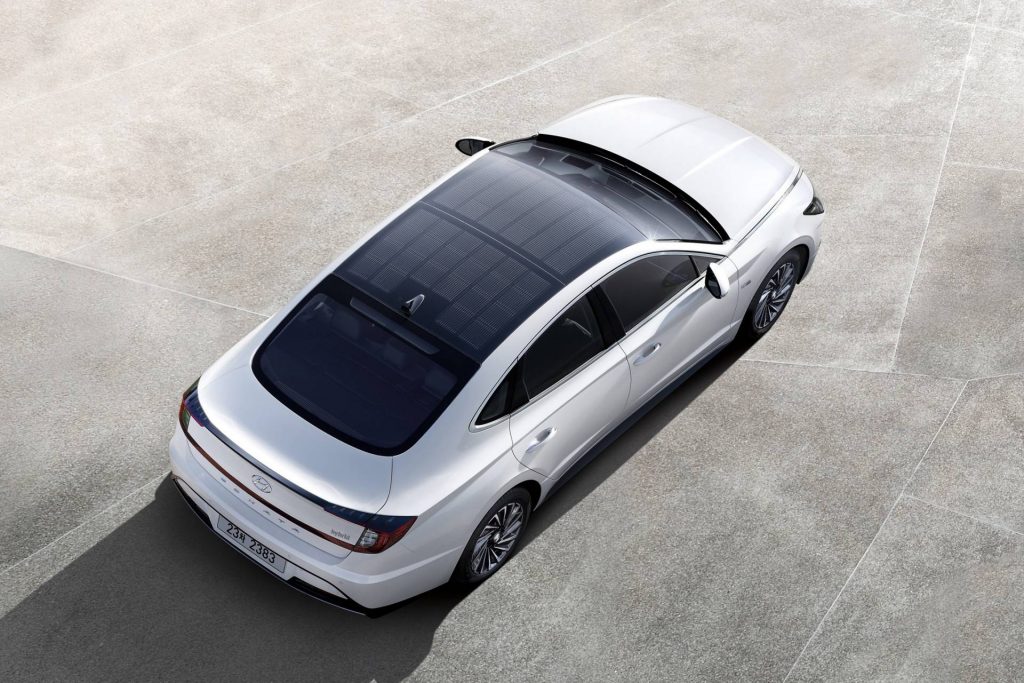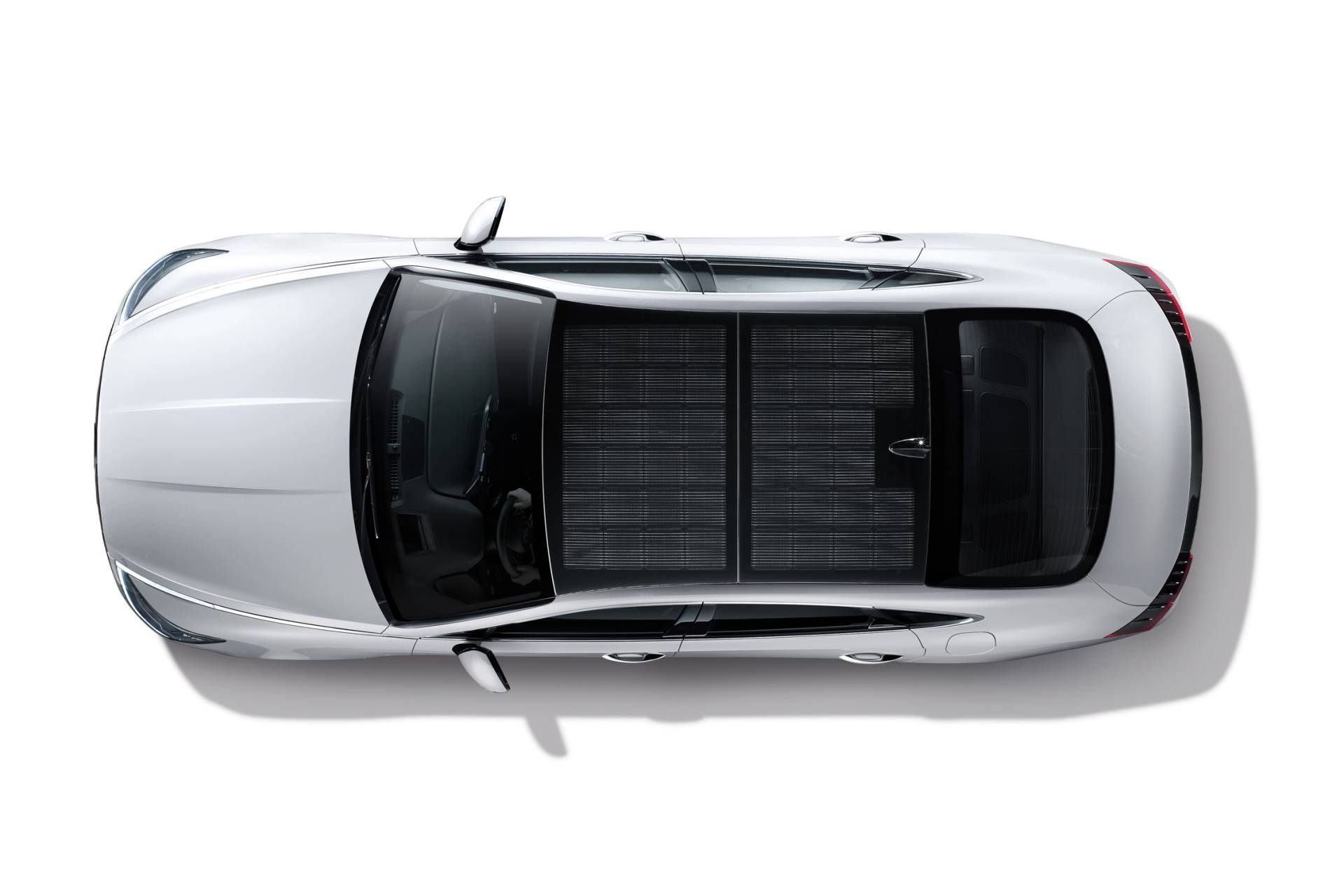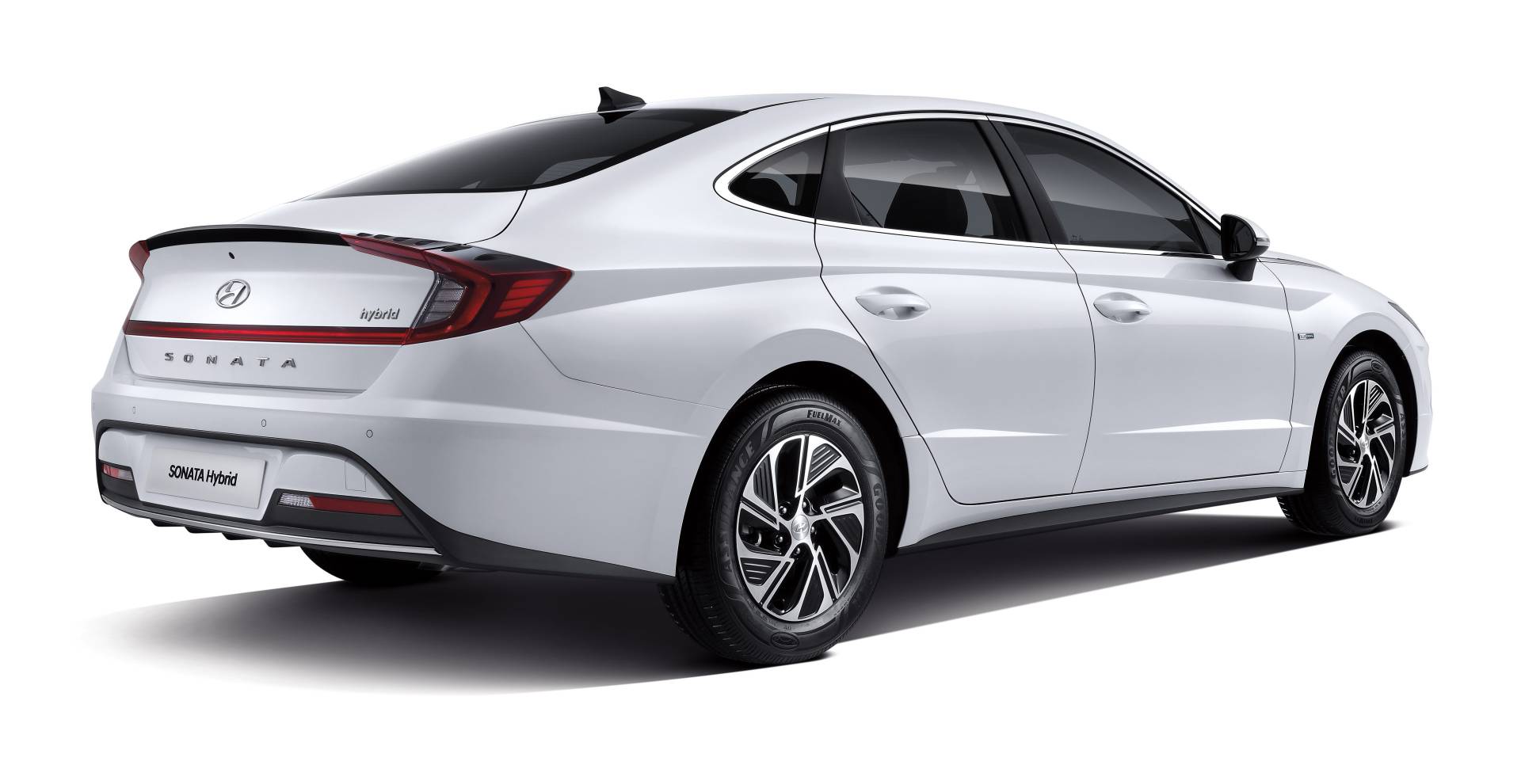Following its Korean launch, Hyundai’s all-new 2020 Sonata Hybrid will soon debut in North America, so the automaker has released more details about the vehicle’s solar roof charging system.
A first for the brand, the panels mounted on the roof charge the vehicle’s battery even while driving, thus preventing battery discharge, improving fuel efficiency, and reducing CO2 emissions.
Furthermore, the 2020 Sonata Hybrid benefits from additional electrical power and driving range thanks to this technology. According to the company, the system , which comes as standard, can charge 30 to 60 percent of the battery per day and six hours of daily charging will increase travel distance by an extra 1,300 km (808 miles) annually.
When solar energy activates the panel’s surface, the roof converts it by using photons of light from the sun. This creates the electron-hole pairs in silicon cells, which in turn generate electricity that is subsequently converted to the standard voltage by a controller, and then stored in the battery.
Also read: 2020 Hyundai Sonata Turned Fully Autonomous By Russia’s Yandex
“Solar roof technology is a good example of how Hyundai Motor is moving towards becoming a clean mobility provider. The technology allows our customers to actively tackle emissions issue. We are striving to further expand the application of the technology beyond eco-friendly vehicle lineup to vehicles with internal combustion engine,” says Heui Won Yang, Senior Vice President and Head of Body Tech Unit of Hyundai Motor Group.
The 2020 Sonata Hybrid is powered by a Smartstream G2.0 GDi HEV four mated to a six-speed hybrid transmission with Active Shift Control technology.
The gasoline engine develops 150 HP and 188 Nm (139 lb-ft) of torque, with the electric motor adding another 51 HP and 205 Nm (151 lb-ft). Hyundai says it currently has no plans to bring the Sonata Hybrid to Europe, where it continues to sell the i40 in sedan and wagon body styles.














